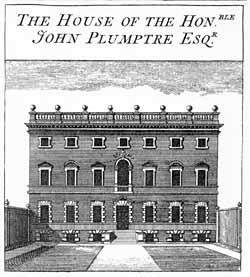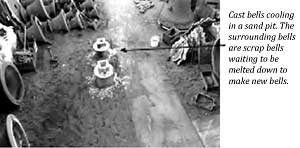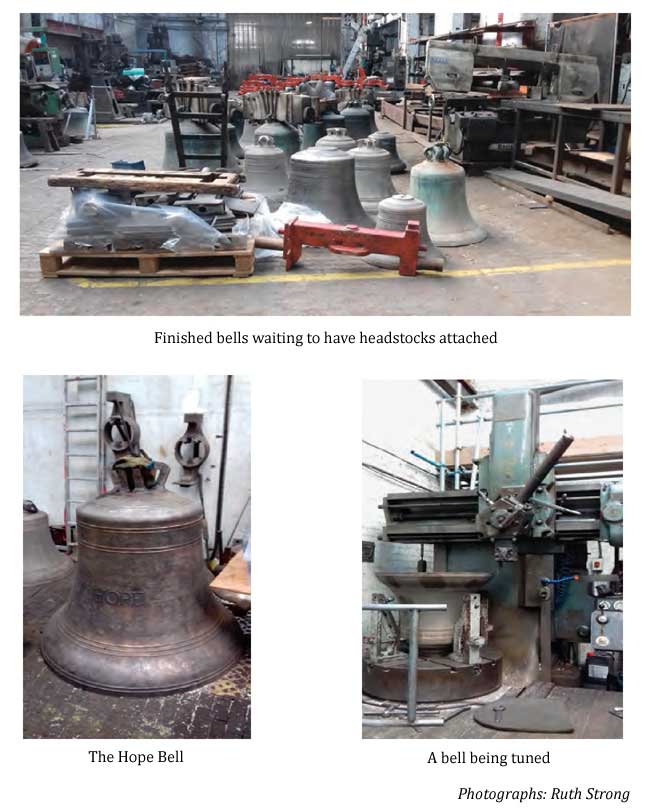Events and excursions, Winter 2023
Myles Thoroton Hildyard lecture, 14th November 2023
Plumptre House, Nottingham
Pete Smith

The Miles Thoroton Hildyard Lecture is named after the owner of Flintham Hall, a Grade 1 listed building in Nottinghamshire, who was President of the Thoroton Society for forty years (1961-2001). This year’s lecture was given by Pete Smith on 14th October. As a member of the Society whose lectures are known to be both well informed and interesting, Pete attracted a large audience. The subject was the improvements to Plumptre House starting around 1724-25: the rebuilding of the East wing to a design by Colen Campbell, and the reconstruction of the inside of the house to plans and designs by the owner, John Plumptre. There was a large house on the site already, with extensive gardens and with its south front facing onto the land immediately around St Mary’s Church in the Lace Market. There is, now, a narrow road between the church and the site of the house, but in the eighteenth century the south front of the house faced straight on to the land surrounding the church. So Plumptre made the main entrance to the house the east front, and this was the wing that was completely rebuilt to Campbell’s design. The resulting magnificent east front can be seen in a 1741 view of Nottingham from the east and an 1844 picture showing the east front with St Mary’s church to the left of it. The existence of an extensive portfolio of 80 of Plumptre’s plans and drawings for the interior of the house, held in the Nottinghamshire Archives, enabled Pete to lead us through the remodelled interior of the house, on all three floors. Some of the drawings had been digitally combined by Pete to make the interior intentions clearer. Not only the situation and design of the rooms were shown, but also details of embellishment and decoration, showing Plumptre to have been an unusually talented amateur designer and draughtsman.
John Plumptre was a local MP, and on his death the house passed to his son. Over succeeding years the house was let, and then sold, and eventually demolished in 1859. What a pity, we were all left feeling. But how fortunate that this wonderful portfolio is safely housed in the Nottinghamshire Archives, enabling Pete to access the drawings and present them in this fascinating lecture. Pete was detained for some time after the lecture answering questions from an obviously appreciative audience.
Rosemary Muge
Excursion reports
World of Wedgwood, 10th August 2023
Josiah Wedgewood was born at Burslem, Staffordshire in 1730. In 1759 he set up his own pottery at the Ivy House and Potworks in Burslem , for a rent of £15 a year. It consisted of a cottage, two kilns, some sheds and extensive workshops on two storeys. From 1759 to his death in 1795 he transformed the manufacture of pottery and revolutionised the pottery industry. It was therefore wonderful for the lucky members of the Thoroton Society to spend a wonderful day at the World of Wedgwood, not only to visit the modern factory but also the museum which highlighted Wedgwood's life, his part in the development of pottery, his philanthropy, his benevolence towards his workers, and his vigorous part in the campaign for the abolition of the slave trade. On arrival we spent a very good hour on the guided tour of the factory. We learnt about the Wedgwood pottery being manufactured still today. We were able to learn a great deal from the guide as we observed all the stages of the production process. We saw the modern continuous tunnel ovens, learnt that the best earthenware is fired at least three times and it is not decorated until after the first or biscuit firing. We observed the decoration of the pottery and how the third firing gives the pottery ware a hard coating of transparent glaze. The factory is responsible for crafting Wedgwood's Jasperware and Chinaware. A very educational hour of observing shaping, firing and decoration. The rest of the day consisted of the members visiting the galleries, the V&A Wedgwood collection and history and a visit to various shops in the World of Wedgwood complex. But of course Ruth Strong had organised at 1pm a good lunch after the tour of the factory prior to visiting the galleries and collections. Some of the party at 3pm spent time in the decoration studio painting a pot to take home, while others visited the shop, the museum, various other retail outlets and the nature trail in Hems Heath Wood, which I found to be a good place to contemplate Wedgwood's extraordinary life. Thank you to Ruth Strong for organising such an enjoyable and educational excursion.
Paul Baker
Bell foundry and Charnwood Museum, Loughborough, 21st September 2023

We were extremely lucky with the weather. It was a lovely warm summer's day and we travelled in a very luxurious coach. Arriving at 10.30 we were met by one of the Trust volunteers and divided into two groups. From a platform in the museum/shop we looked down on the foundry and were given a potted history of the firm and the processes involved in the making of bells. We were also fortunate enough to watch (from a considerable distance) the molten metal poured into the mould, buried in a sand pit. We all were awed by the skill of the workman in charge. Afterwards we walked around the factory area to see the later stages of manufacture where bells were trimmed, names and dates applied. Finally we went to the carpenter’s shop where all the equipment involved in the hanging of the bells was made. Taylor's bells go around the world and as an example of this, a recent ring of 8 bells accompanied by Taylors people, was delivered to the University of Chicago. It is said that Taylor's bells have the reputation of being the most accurately tuned in the world.

Penny Messenger and Margaret Truman
THE THOROTON SOCIETY’S ANNUAL LUNCH
Saturday 4th November
Ramsdale Golf Centre, Calverton
Thirty-six members and guests sat down for the Society’s annual lunch at Ramsdale Park Golf Club, where we were situated in a pleasant upstairs room, with a wide view over the golf course and the surrounding area.
After a welcome from the Society’s Chair, Richard Gaunt, our President, Adrian Henstock, gave us a short opening talk on the Seely family who owned the surrounding land on which the golf club stood. Many people will particularly know the family’s name in connection with the Frank Seely Academy at Calverton.
Jill Oakland said grace ahead of a delicious meal of prawn cocktail with avocado, followed by baked cod served on mashed potato with fresh vegetables, ending with a dessert of chocolate roulade garnished with strawberries.
Following the meal, Dr Gaunt introduced our speaker, William Ruff, former Head of English at Nottingham Boys High School, who gave us an enlightening talk about the role that the Jesuit priest, Henry Garnet, played in the Gunpowder Plot of 5 November 1605. Although Garnet was not involved in the plot itself, he was implicated because he had heard the confession of one of the conspirators and was consequently arrested and put on trial. He was found guilty and executed as a traitor in May 1606. William brought with him a small brass box engraved with an ear of corn, depicting the face of Henry Garnet, which, according to his followers, relates to the ‘miracle’ which occurred on the scaffold on which Henry was executed. Our lunch drew to a close with thanks expressed to all those who had looked after us and to David Hoskins for organising the event. Everyone agreed that it had been a very enjoyable occasion.
Kevin Powell